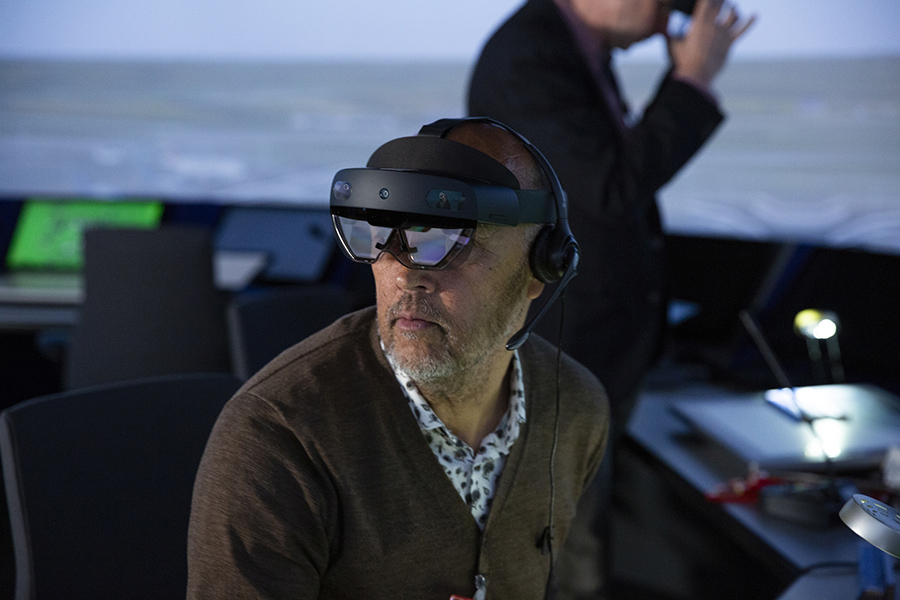Binoculars are still used in control towers for everyday operations. Now researchers from SESAR JU member, NLR - Netherlands Aerospace Centre, are investigating augmented reality goggles that will help controllers better manage airport traffic! The tests are part of PJ.05-W2-97 into virtual reality and AR applications in tower environments.
The researchers specifically looked at attention guidance strategies with an augmented reality device, the Microsoft HoloLens 2 (TM), inside an air traffic control tower environment for Schiphol Airport. That environment was simulated in NARSIM and consisted of a realistic but downscaled presentation of the airport with two tower controller working positions emulating current tower systems.
The research builds on work already performed during SESAR 2020 wave 1 by the RETINA project.
The downscaled Schiphol Tower set-up allowed researchers to focus their work on the application of augmented reality with the introduction of (virtual) aircraft labels, as well as special symbology and auditory cues for capturing and guiding tower controller attention in the case of critical events. Some typical attention-critical events that might occur at an airport, such as go-around operations and runway incursions, were generated by a team of NLR experts and presented to the tower controllers while they were operating traffic as usual.
The augmented reality blends real world images with computer-generated data in real-time, so that visual information can be enhanced to improve identification and tracking of aircraft (or vehicles) on and around the airport. In low visibility, synthetic vision can show digital georeferenced data that supplement the missing real vision (virtual reality).
Human performance and air traffic control operational experts observed and surveyed the simulations – their report is expected in the coming month. But the first results look promising: air traffic controllers reported that interpreting traffic situations is faster and easier with the dedicated symbology in augmented reality.
The augmented reality blends real world images with computer-generated data in real-time, so that visual information can be enhanced to improve identification and tracking of aircraft (or vehicles) on and around the airport. In low visibility, synthetic vision can show digital georeferenced data that supplement the missing real vision (virtual reality).

This project has received funding from the SESAR Joint Undertaking under the European Union’s Horizon 2020 Research and Innovation Programme under Grant Agreement No 874470.
